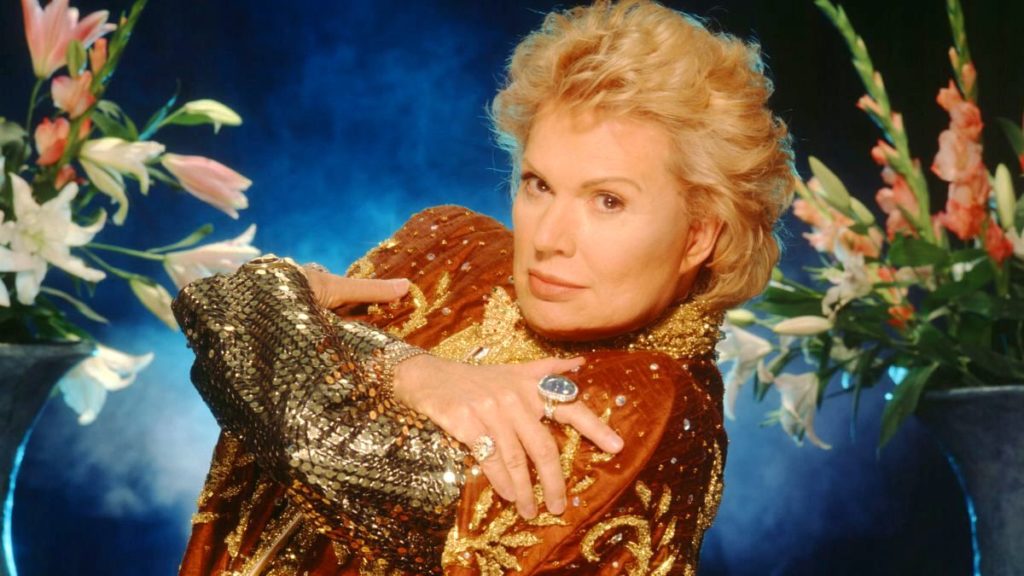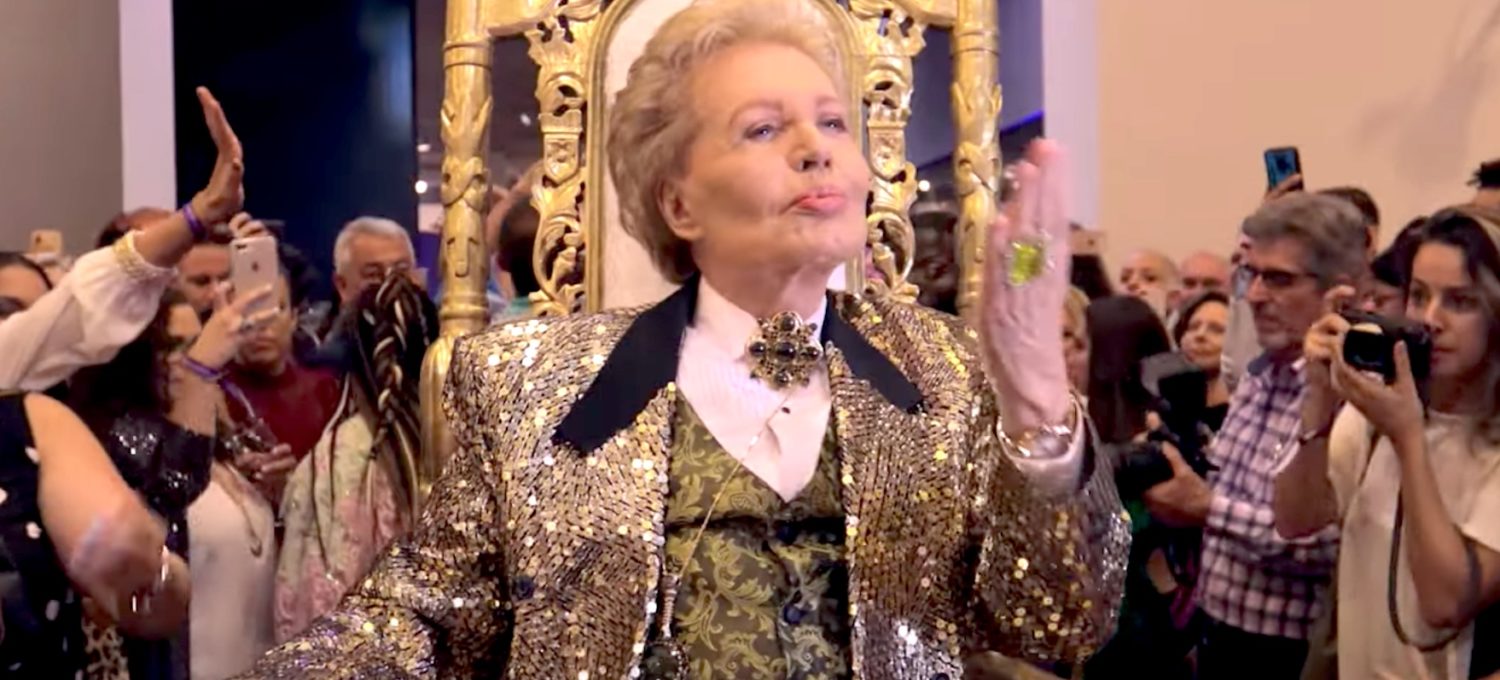Richard Lindsay and Ryan Parker have a conversation about ‘Mucho Mucho Amor’, a documentary about the flamboyant Puerto Rican TV astrologer Walter Mercado. The film is now streaming on Netflix.
Richard: It’s probably safe to say Walter Mercado was the most successful media astrologer of all time. If there’s anyone else in his category, I’m unaware of it. At one time, hundreds of millions of people had access to his horoscopes on the Spanish language channel Univision.
Ryan: This is what I love about our current age of streaming content. I had absolutely no idea who Walter Mercado was nor how famous he was. Ten to fifteen years ago, I would have remained ignorant. Where does a film like this live prior to Netflix/Amazon/Hulu/HBOMax? It would have played some festivals (like it did) and that would have been that. But Mucho Mucho Amor played Sundance as a Netflix doc. I’m fascinated by films like this, both for its subject matter and what it says about the business of film acquisitions, distribution, and exhibition.
Richard: Well, for Anglos like us, we may only know Walter from the periphery of our television viewing, flipping past Univision and seeing this androgynous figure in a cape dramatically delivering the horoscope in Spanish. He was kind of a quirk of media culture as strange to outsiders as Sábado Gigante and lucha libre wrestling.
If you’re Latinx and over thirty, you probably know him very well, as your abuelita shushed you so she could hear his prediction for her sign. Mercado made his horoscopes must-see TV in the Spanish-speaking world. In the process he developed a cult following that could only be described as religious.
His horoscopes were common-enough stuff for the genre: “Now’s a good time to travel,” “You will experience new love,” mixed in with some Oprah-style Gospel of Self-Empowerment: “Have faith.” “Believe in yourself.”
But it was the performance that made it special. He wore colorful capes studded with rhinestones and sequins, along with gigantic rings and bracelets. The sets often had Walter perched on a gold throne surrounded by candles, smoke machines, and sometimes even live musicians. Trained in dance and drama in his native Puerto Rico, his spellbinding hand gestures and delivery made each sign’s prediction seem tailor-made for each viewer.
Ryan: I’m glad you bring up costumes and set design, Richard. Given the work that you’ve done on the history of religious cinema and religion and pop culture, I know that kitsch and camp have been integral to that research. As I watched clips of his show, I thought more about Trinity Broadcast Network and Jan and Paul Crouch than I did Dionne Warwick. What is it about certain avenues of spirituality that lend themselves so easily to camp performance? You’d never see Moltmann or Barth in a sequined cape.
Richard: Actually Barth was known to wear a sequined cape, but only on Reformation Sunday. Part of Mercado’s camp came from his ambiguous gender and sexuality. He wore foundation and rouge to accentuate his high cheekbones. He had painted-on eyebrows and wavy blond Glenn Close hair. In the film, he only admits to having had the slightest cosmetic procedures, “A little Botox like Nicole Kidmanm,” but there had to be some lip fillers as well.
Asked about his sexuality, he would always answer coyly. As he says in the film: “I have sexuality with the wind, with the flowers in the garden, with all the beautiful display of nature. …I have sex with life.”
Part of camp performance is hiding something in plain sight. This in-between gender and ambiguous sexuality surely added to his mystery, and made him a queer icon ahead of his time.
Ryan: I couldn’t look away. I found myself wondering what it would feel like to have all that work done. For someone who seems to profess elements of self-acceptance…of finding confidence in who you are…it seems like Walter put in a lot of work to become Walter.
Richard: One of the best commentaries I’ve heard on this movie came from the drag queen Trixie Mattel, one of the stars of RuPaul’s Drag Race. She said, “The way he made people believe him through the TV was through makeup and hair and costumes. You are what you are dressed as.”
Walter’s spirituality similarly blurred boundaries. In the film we see his house in Puerto Rico loaded with global religious kitsch. He has shrines to the Virgin Mary and other Catholic saints. We see him meditating in a room in a lotus pose surrounded by statues of Buddha and Ganesh.
“I realized that all religions have a point of convergence,” he tells his interviewers, “I call it interfaith religion.”
Ryan: This, to me, was just fascinating. The older I get, I’m less concerned with being “right” about my beliefs and more interested in finding out where those beliefs resonate with others who practice different faiths or hold different beliefs. Even though it didn’t go into great detail about what, specifically, Walter believed or how he fashioned that belief, it was interesting to see how he became this mythological figure. Do you remember him talking about, as a child, bringing a dead bird back to life? I immediately thought about the childhood myths of Jesus and wondered if this wasn’t something that he “borrowed” to create his identity.
Richard: What’s unmistakable is Walter’s holy appeal to his viewers. The film shows him coming to Miami for a museum retrospective of his life. He is frail at the age of eighty-six, but even as he is driven through the airport on a cart, people begin coming up and greeting him. At the exhibit itself, he is wheeled out on a golden throne with dancers in flowing robes processing in front of him. The reaction of the attendees who swarm him for pictures and hugs is not like meeting a celebrity, it’s more like, “If I can just touch the hem of his gown I will be healed.”
The more I learn about faith, the more convinced I am that religion should be tangible and embodied. Those of us from Protestant Christian backgrounds have been so afraid of idolatry that we have deprived our senses of the smell, sight, taste, and touch of faith. This goes for embodiment in the form of holy figures as well. Looking for the divine in fallible people can certainly lead to abuse—Walter Mercado’s most questionable project was allowing his image and name to be used to promote the scam “psychic hotlines” of the 1990s. But people of faith should learn to differentiate between the mortal limitations of humanity and the qualities of a holy person that lead to blessing and transcendence.
Ryan: There’s a certain strand of historian and cultural commentator that looks at our present moment and our not-so-distant future with fear and trepidation. The rise of far-right and far-left extremist groups that speak to individuals’ feelings of disenfranchisement, loneliness, and lack of purpose, is a cause for great concern. But do you think we will see more personalities like Walter Mercado take center stage? Voices that call to the better angels of our nature? I think back on the rise of Barack Obama and all the hope and positivity surrounding his first presidential campaign. There is absolutely none of that around Biden. Who is (or could be) the next Walter Mercado?
Richard: It’s hard to say these days because as soon as someone is recognized as a “good” figure they get torn down on social media. Celebrities have always gone through cycles of being built up, then torn down, then coming back, but that cycle seems to have been sped up to where it happens in a matter of days or weeks, rather than over years.
One of the most profound statements of faith in the movie came from the owner of a diner in Miami who had shrines built to Walter in his restrooms. The interviewer asks, “Do you believe in astrology?” The diner owner replies, “I believe in Walter and I believe in anything Walter does and says.” I don’t think he was saying Walter could do no wrong, but that Walter was for him an embodied personality of the Divine. We could do worse for an image of the Divine than an androgynous figure in a sparkly cape, circling his heart and repeating Walter’s signoff: “Mucho, mucho, mucho amor.”

